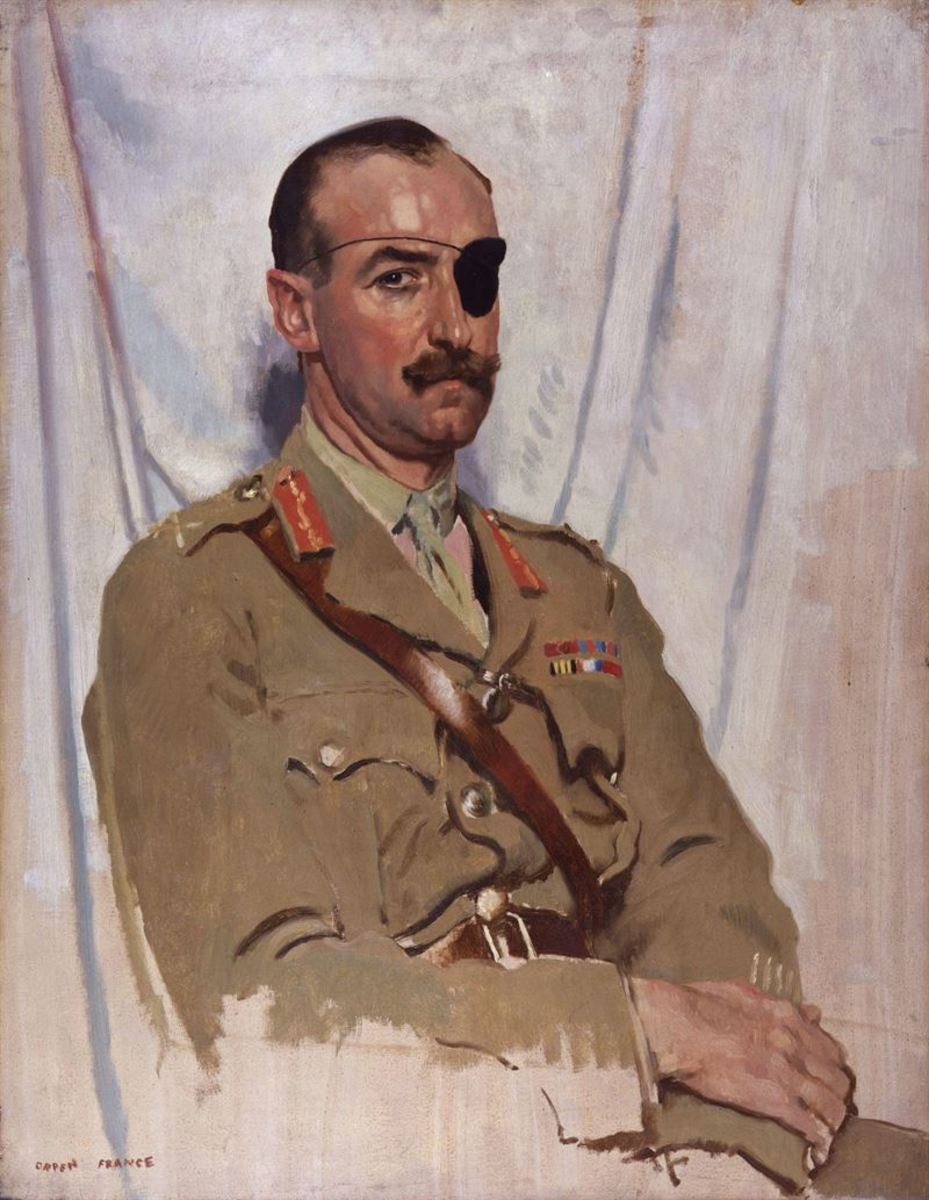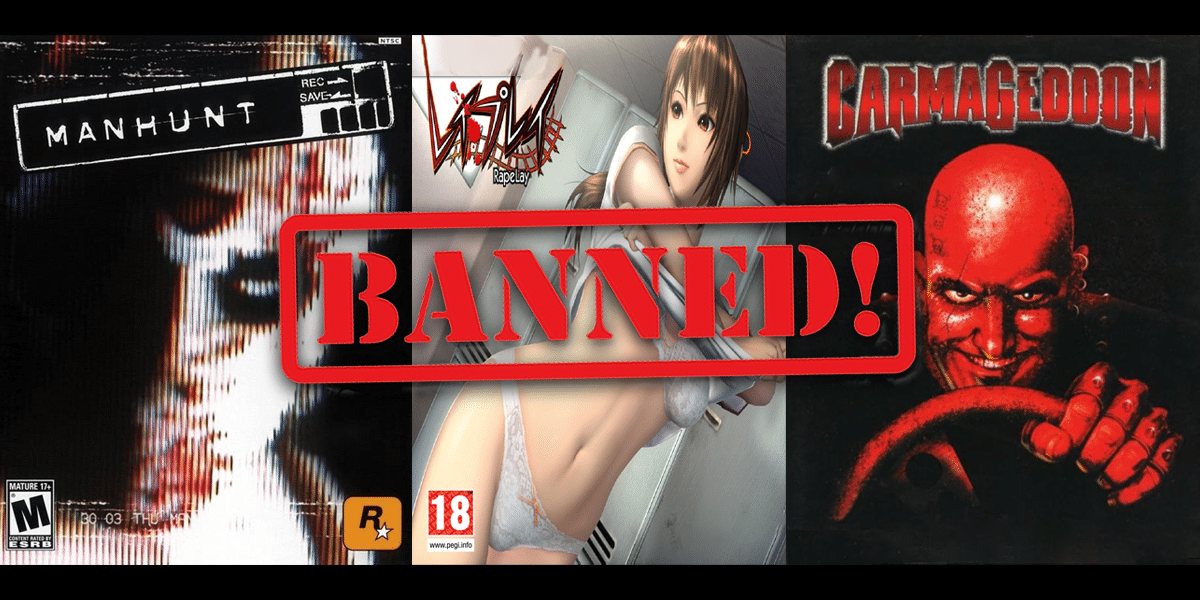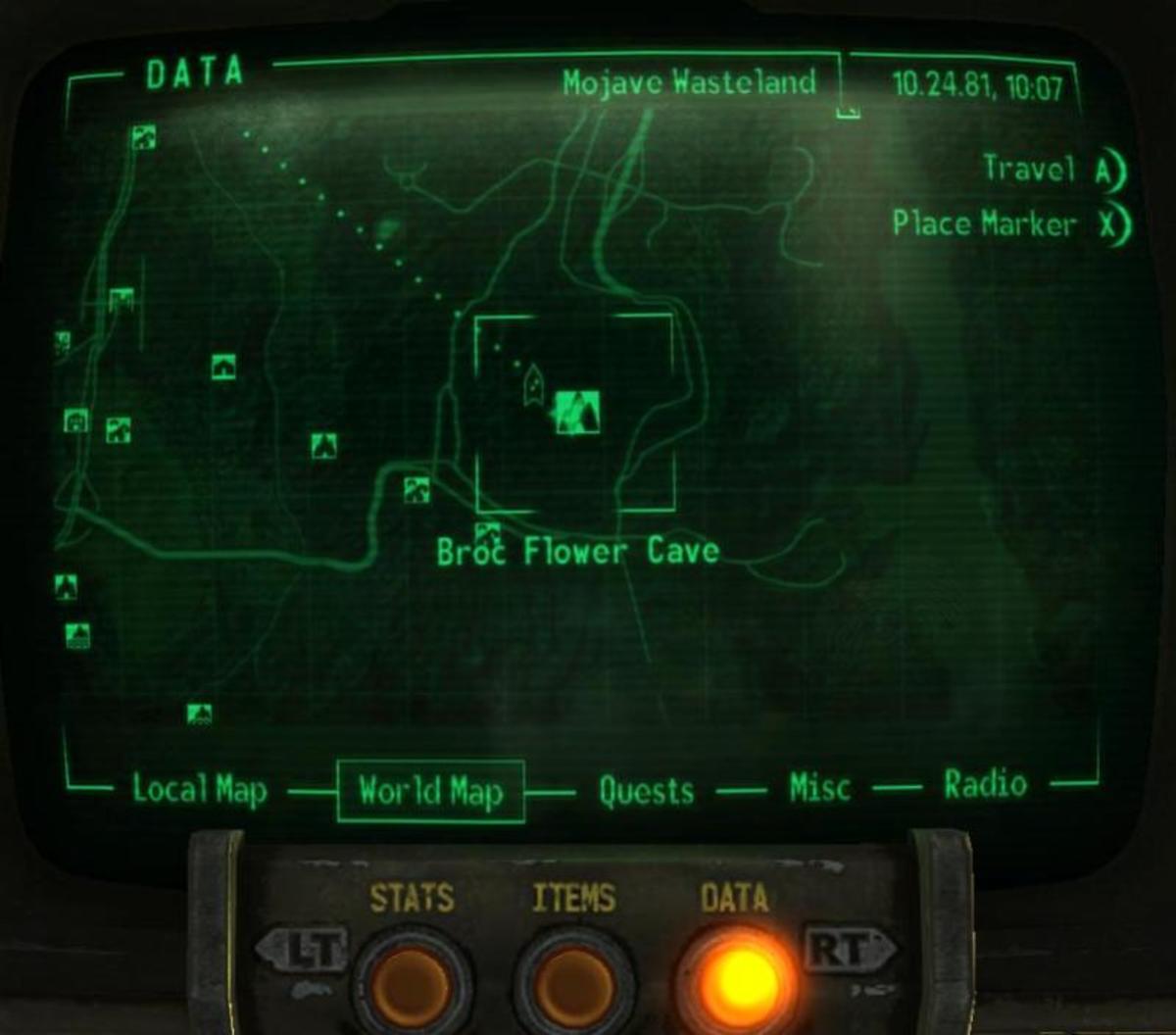The Top 12 World War II Video Games
There have literally been hundreds of (or at least over one hundred) games based on World War II. In fact games that feature World War I or Vietnam, or any other war, pale in comparison as far as sheer number is concerned.
I’ve played my share of WW II titles, whether they be flight simulators, shooters, or strategy titles. So even though nearly nobody wants to hear about WW II anymore as far as video games go, they still show signs of existing. At one stage even Assassin’s Creed III was rumoured to be set during the war, for instance. Even though it isn’t, it may happen in future.
I set out to make a list of my favourite WW II games that I’ve played over the years.
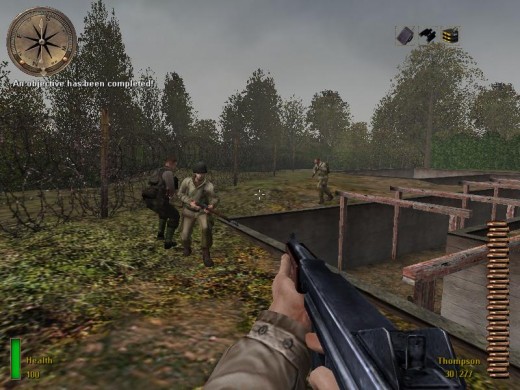
2015 Inc., the developer who made MoH: Allied Assault, were also known for other games, including Men of Valor. They eventually went on to form Infinity Ward, responsible for most of the titles in the Call of Duty series.
1. Medal of Honor: Allied Assault (2002)
Medal of Honor was released the year after Saving Private Ryan – probably one of the best war films ever made, and by Steven Spielberg too. It’s widely said that Spielberg was responsible for the video game series too. This isn't that hard to believe when Dreamworks Interactive (now called Danger Close), a division of Dreamworks, Steven's company, developed the first game and several others in the series too.
Still, the first couple of games were PlayStation only, and it was years before the series made it on to the PC. In 2001, a game was said to be in development, and attracted a lot of hype and attention. So began my love affair with a title that wasn’t even released yet.
This was Medal of Honor: Allied Assault.
Gaming magazines such as Game Informer ran huge previews of the game that spanned pages upon pages, showing the mission that everybody was talking about: Omaha beach. I drooled over the pictures inside, probably more so than I would have if it had been an issue of a naughty lad’s mag.
I spent hours as a young teenager in the pool, as a result, pretending that I was running up that same beach, dodging machine-gun fire and hiding behind tank traps and other obstacles.
I kept checking month after month to see if the game was out. Finally… in early 2002, I got my chance. A friend of mine got the game, and I was straight over at his house, playing through it before he could even close the front door. I was kind of bummed that the missions I saw were based in North Africa, and not the beaches of Normandy. But even so, I was amazed at the sights and the sounds – like firing the M1 Garand and hearing the pinging noise after eight rounds had been expelled, and the magazine was flung in to the air. It all seemed very atmospheric and “real”.
Then I eventually got to the Omaha beach level. At the time I was so engrossed that I hardly even realised that parts of it were taken almost straight out of Saving Private Ryan: like one of the Higgins boats exploding after getting hit by a mortar shell, for instance.
As the boat doors opened, and most of the troops around me were cut down almost instantly, I scaled up the beach and hid behind one of the structures. Seeing numerous soldiers getting slaughtered and hearing the machine-gun fire; it was fantastic and nightmarish too, especially with the sound turned up. Making my way up the beach while avoiding mortar shells and bullets, I was actually sad to leave the carnage behind. It was a good thing that I had save games and checkpoints of the mission, and took great delight in playing it over and over again.
I’d say one of the best missions in a game ever, and very likely my favourite WW II game ever made.
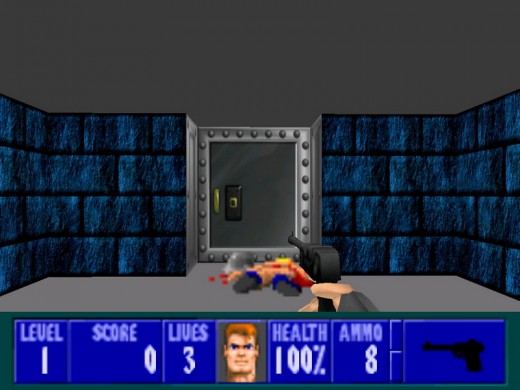
Wolfenstein 3D initially had a lot of stuff planned that didn’t make it in to the final release. Things like stealth, carrying and hiding bodies and so on – things that fit in more with its “predecessors” that influenced it.
This was all scrapped however, mainly because of the system requirements and technological limitations for the time, and the game we all know and love became just a run and gun affair – but it was good enough that way, for sure.
2. Wolfenstein 3D (1992)
This is what many refer to as the granddaddy of ‘em all. And by that they mean first person shooters – not WW II games. This is because the game that inspired this one, Castle Wolfenstein, was released a decade earlier, and was of an entirely different genre.
But without Wolfenstein 3D, developed and released by id Software over twenty years ago, where would we be right now? If the game hadn’t existed, would one of the most popular genres in gaming even exist? True, there were first person games before Wolf 3D, but what if id Software hadn’t come along and made the game, and further popularised the genre by releasing Doom a year later?
I grew up playing Wolfenstein 3D, probably much like many others out there. I don’t think I’ve ever met anyone who hasn't played it. If you haven’t then you need to. Why? Because it was the first WW II FPS ever made. Without it I would likely not have developed my love of games, or even the history of World War II.
I still remember back when my dad bought our first computer, that I had the shareware version of this title, along with the shareware of Doom. I stayed up late into the early hours of the morning playing it as a child. Obviously looking back now, I shouldn’t have been allowed to do this, seeing as the age restriction was about double my age at the time, and it was way past my bedtime, but anyway.
You controlled the iconic Captain William “B.J.” Blazkowicz, an escaped American war prisoner held in Castle Wolfenstein during World War II. Levels upon levels ensued, which had you fighting through German Shepherds, guards, officers, and elite SS troops to finally reach the end level. It was here that you discovered you had one more Nazi to take care of: Hans Grosse, the boss character, who was packing two chainguns.
As a kid, this was probably the first truly frightening moment in a game I can recall. Wolf 3D certainly had its scary moments, with its enemies, long winding corridors, mazes, and atmospheric tunes, but this was the icing on the cake – just when you thought it was all over.
And one more reason why Wolf 3D was awesome: you finally, first hand, got to find out exactly what really happened to Adolf Hitler down in this bunker – as you got to go toe to toe with the evil dictator in his little diving suit. How cute.
I think I owe it to my childhood self to put this game on this list.
There were rumours a while back that Pyro Studios was working on a new Commandos game, which would go back to its roots and be more like the first three titles gameplay-wise. Pyro later denied this rumour.
3. Commandos: Behind Enemy Lines (1998)
Years ago I knew this pasty faced kid at school who always talked about this game. I got into playing the demo for Commandos: Beyond the Call of Duty, the expansion, later on in the year, and it was then that I tried to befriend this guy just so I could borrow the game. You know that guy. Admit it. Someone you wouldn’t usually have anything to do with, but he has something you want/need.
I got home and started to play the game. I became completely engrossed in the briefings and in-game instructions that took place before you assumed control of a crack team of commandos, all seen from an isometric point of view.
The team consisted of the Green Beret, the Sniper, the Driver, the Diver, the Sapper, and the Spy. Most missions you only got half of these men at a time, and you had to use them to achieve success within a mission – most of which involved guerrilla warfare, espionage, or a bit of good old reverse engineering. Each of these commandos had different special abilities too, and by far the all-round best was the Green Beret: the Irish-born killing machine, who could burrow underground and spring up on an unsuspecting German soldier, or use his decoy radio set to distract the silly buggers.
Commandos was very challenging, and even though the first couple of missions were quite a breeze, as you progressed it became bloody difficult at times. This was nearly reason enough for me to put the sequel, Commandos 2: Men of Courage, here instead of the first game – one of the reasons being that I found it perhaps a little more forgiving. There were several things that I appreciated in this game over the original, but I eventually settled on the first, seeing as I likely spent a lot more time with it and played it through on several occasions.
And if you thought that either of these games in the series was difficult, then you haven’t played Commandos 3: Destination Berlin. Still, any of these titles was better than Strike Force. Pyro messed up the franchise with that one…
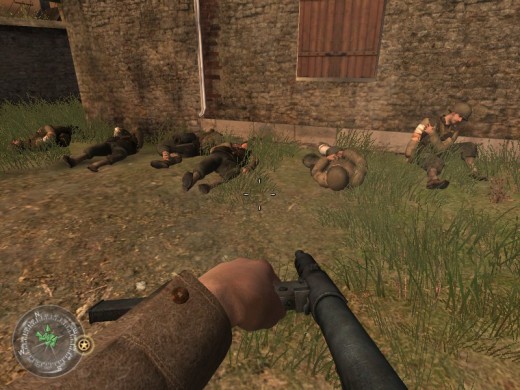
Pretty much every Call of Duty game to date has used id Tech technology as part of the game engine.
4. Call of Duty (2003)
Up until the release of this game in 2003, most WW II FPS titles touched more on the GI; the Ground Infantry; the army.
But Call of Duty was different. You were able to control an American paratrooper in the 101st Airborne as he parachuted in to Normandy the night before the big D-Day invasion. Running around in the dark, meeting up with fellow paratroopers, and getting a hold of some guns seeing as you’d lost you leg bag with your weapons in it (a common occurrence in the war); if Medal of Honor: Allied Assault was inspired by Saving Private Ryan, then this game was inspired by the excellent WW II series, Band of Brothers.
Definitely the first few missions that took place in the night with AA gunfire lighting up the sky, and battles with the Germans over dark fields with little illumination, provided the most atmospheric feel during the American campaign.
Speaking of which, the thing that was really cool, and kind of made up for an otherwise rather short game, was that every other mission saw the player switching to a different character. There were also British and Russian campaigns; the latter featuring another very familiar scene straight out of Enemy at the Gates.
And let’s not forget that one of our favourite characters out of any game, the always sexy Captain Price, made his debut in this title. Since then he’s appeared in the sequel, as well as making it in to the Modern Warfare series, in some sort of alternate reality, time-defying, anachronistic type… thing.
RTCW was handled by Grey Matter and not id Software. This was evident in that some of the sounds in the game were recycled from games like Kingpin.
Grey Matter had developed titles like Redneck Rampage and Kingpin, under the name Xatrix, as well as being responsible for the PC port of Tony Hawk's Pro Skater 2, before making RTCW. Grey Matter eventually ended up being absorbed in to Treyarch, which has made several Call of Duty titles, most recently Black Ops 2.
5. Return to Castle Wolfenstein (2001)
Whereas most other contemporary WW II shooters such as Medal of Honor: Allied Assault went the more “historically-accurate” route, the Wolfenstein series is practically synonymous with the occult as it’s fuelled by all the rumours of Nazi involvement in the dark arts during World War II.
This was evident in earlier, second generation titles in the franchise, developed by id Software, but became even stronger and more apparent in this game. Once more, the series protagonist, Captain BJ Blazkowicz, is holed up in Castle Wolfenstein. You’d be mistaken for thinking though that this game is a remake of the original game. It isn’t, and practically the only thing reminiscent of Wolf 3D is the castle, which looks far different from the original, obviously.
Anyway, Blazkowicz escapes, naturally, and goes on a hunt for the Nazi SS Paranormal Division, who are involved in some freaky stuff involving the occult and the undead. Their ultimate aim is to resurrect an old king, Heinrich I, said to be an ancient ancestor of Heinrich Himmler, and use technology they’ve developed to tip the scales in their favour and very possibly win the war and take over the world.
It makes for an interesting story, with its fair share of scares, particularly in the catacomb levels. From here, Blaze (as the surname eventually became known as later on) goes into the more industrial areas in Germany, and eventually down in to the laboratories where some twisted experiments are taking place, making mutants called X-Creatures and UberSoldats, which are little more than freakshows that could be mistaken for walking tanks, with devastating weaponry.
Unlike the more recent Wolfenstein, from 2009, this certainly was a title on top of its game ten years ago, technologically and otherwise.
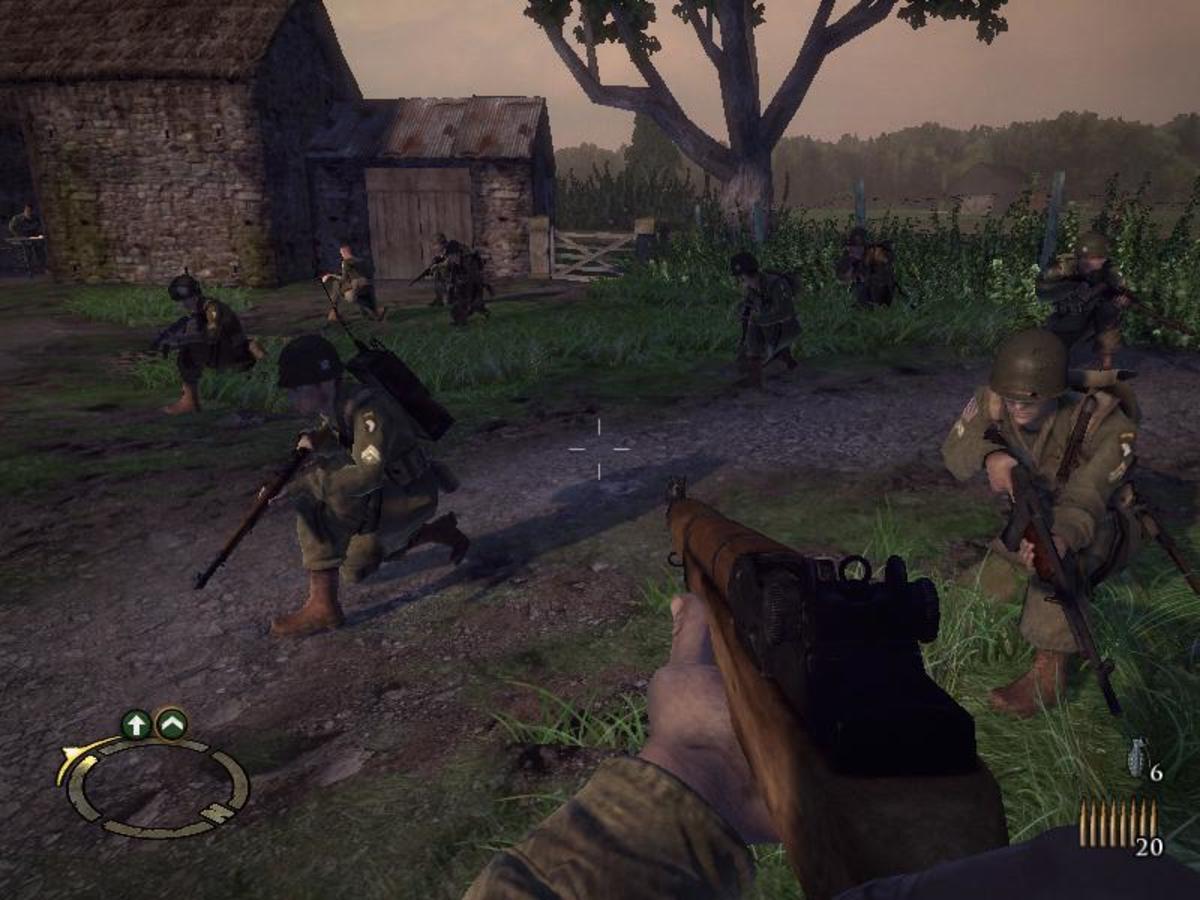
Future titles like Hell's Highway, did away with situational awareness mode, and it was stated at some time that the next Brothers in Arms title, Furious 4, is likely to emulate Battlefield: Bad Company and even Ingourious Basterds, as in having a bunch of goofballs running around destroying everything in their path.
6. Brothers in Arms: Road to Hill 30 (2005)
I often confuse Brothers in Arms with Band of Brothers. If the original Call of Duty gave me the feeling of that epic series, then this one took it one step further. Once more, you got to parachute in to Normandy as part of the famed 101st Airborne.
But in BiA, there was a lot more character development and depth to the story, and not quite so much all action and cinematics as CoD. The gameplay was also far different from what you’d expect after playing other titles like MoH or RTCW. You weren’t just a one man army taking on impossible numbers and unrealistically emerging victorious as in some of those titles. This game required teamwork with your squad, often consisting of two or three fire-teams, one an assault team that would corner and flank the enemy, and possibly flush them out of cover with grenades, and the other a suppressing fire-team that covers the other team and keeps the enemy ducking down and avoiding fire, essentially lowering their combat effectiveness.
Gearbox Software enlisted the help of a retired army general, General Antal, who was involved in a big way with consultant work on the title, much like Captain Dale Dye was with MoHAA (he also helped with and starred in a later title in the series: Hell’s Highway).
Although the gameplay with the AI squaddies was frustrating for the most part, Antal helped bring a critical element into BiA, and that was tactics. In addition to using your fire teams and movement across the battlefield correctly, you had situational awareness – a major feature in the game that would allow you to see a large area from a bird’s eye view.
And you were better off using tactics and planning to your advantage, seeing as like I said, this game could get very difficult in a hurry, and was more akin to the likes of Rainbow Six than your more traditional run and gun affair. Only did you take on German troops, almost always present in squads or fire teams themselves, but tanks and the like also made appearances in the game. And some times when you didn’t have the necessary heavy weaponry to deal with them, you had to rely on other means, such as sneaking past them if you could.
The extra unlockable content that made it into the game when you completed missions was amazing. You got to have a look at historical accounts, photos and videos detailing events from the war. The presentation in this game was awesome, and although bloody challenging, it was a great WW II squad-based shooter – no doubt about it.
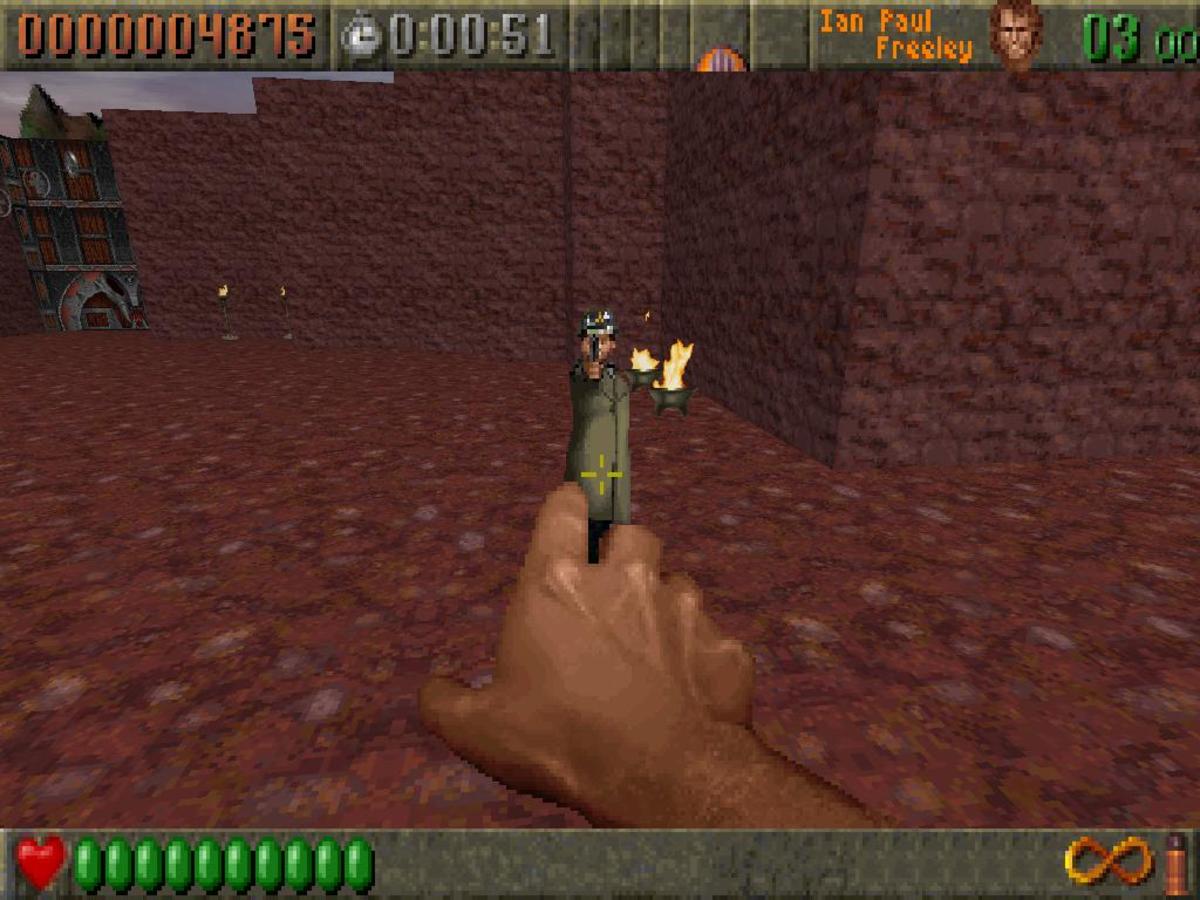
There’s actually a Rise of the Triad game made by Interceptor Entertainment in partnership with Apogee that should be out some time in 2013. It was revealed at QuakeCon in mid-2012. IE started working on this title after they cancelled development on Duke Nukem 3D: Reloaded after disputes with Gearbox Software.
7. Rise of the Triad: Dark War (1995)
ROTT isn’t technically a WW II game… but it was originally planned to be.
Back in 1994, Apogee Software wanted to make an expansion for Wolfenstein 3D. They got id Software’s permission to do so, and started making the game with the working title of "Wolfenstein 3D: Part II: Rise of the Triad".
But somewhere during development, id got back to Apogee and cancelled the idea. So there Apogee (the original publisher of Wolf 3D, and now known as 3D Realms) sat with a game that they couldn’t release. Or could they?
Work continued on the project, but it just became known as Rise of the Triad, and a lot of the enemies and artwork from the original concept were taken out and replaced. But there were still signs that this had once been the aforementioned project. The game used a highly modified Wolfenstein 3D engine, and some of the weapons in the game, which were from the original concept, were left in. Examples of this include the Walther pistol as well as the MP40 submachine gun – weapons used by the Germans during World War II. The enemies also had a somewhat familiar look to them too.
But despite this, the setting was changed from possibly being in Germany like the games that inspired it, to taking place off the West Coast of the USA. You have a choice of five characters to play as, all with different stats, although it may not be too obvious at first. These people make up the H.U.N.T, or High Risk United Nations Task Force, and they’ve been sent to a remote island to check out some strange goings on involving cult members known as the El Oscuridos, who follow a twisted being known as El Oscuro.
ROTT is often listed as a forgotten FPS of the mid 90’s, but it is credited with bringing some innovations to the budding genre. First off, you could use two pistols at the same time (that’s right!), and play with several different missile-based weapons which made up a significant part of your arsenal. The game was also one of the first to feature alternate fire modes, by holding (or charging) the fire button on some weapons as opposed to using a different key. Not only this, but it was immense fun, and didn’t take itself too seriously. You had to rely upon unusual obstacles and power-ups as well as solving numerous puzzles to get through levels. And there were lots of them, and some were incredibly challenging.
Tom Hall, the creative director behind the project maintains that he would rather have switched game engines, and used the build engine, which was being use to no doubt develop Duke Nukem 3D. This and a bit more time to work on it and make it into an even more original title. Some think that this might have made it more of a success than it was, and a more enduring FPS of the times.
However, it was a cracking good bit of fun to play, and I for one know that it would have been an excellent addition to the Wolfenstein series. Alas, it was not to be.
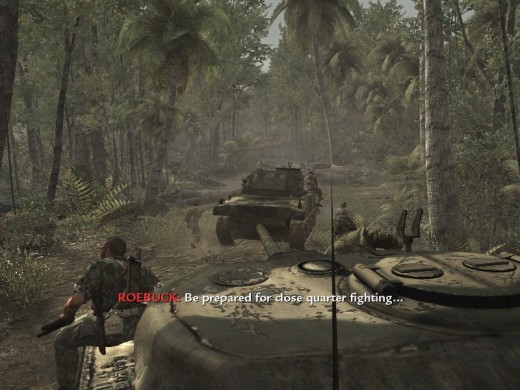
8. Call of Duty: World at War (2008)
The first Call of Duty all ready made it on to this list, but I had to at least mention this title, which was the fifth CoD game overall, and the fourth -- and so far the last -- set during World War II.
For several years, the Call of Duty games had shied away from violence. While playing the originals, there was rarely ever any gore. When somebody got shot, all you saw was a small cloud of reddish mist.
World at War to my knowledge was the first game I’d played in the series that wasn’t scared to get a little dirty. Soldiers when shot would spill more realistic looking blood, and it wasn’t uncommon to see them lose limbs, or at times their bodies completely, as they were all but vaporised after being right where a mortar shell landed or bazooka round went off.
World at War also brought some last minute reprieve from an otherwise stale formula. For years we’d stormed the beaches of Normandy, parachuted behind enemy lines in the night, and fought in countless French villages and fields, and hedgerows.
World at War took us to a rarely explored locale: the sunny, sandy islands in the Pacific. The American campaign saw you taking on the Japanese this time instead of the boring old Hun, whom we’d faced many times before. And just like the marines who fought there in real life will tell you, the Japanese were ruthless, suicidal foes who would willingly die in battle for the Emperor. You’d have snipers in trees firing down upon you, and others rushing at you shouting “Banzai!” while attacking you with their bayonets. They were significantly more challenging.
Of course the Russian campaign was pretty much the same old stuff we’d seen in the first and second game, with few differences, and there wasn’t even a British campaign, which we’d become accustomed to over the years in Infinity Ward-developed CoD titles.
But World at War did have the massively popular game mode titled Nacht Der Untoten, which was unlocked after completing the game. Here you were in an abandoned building and had to fend off hordes of undead Nazi zombies. Most Call of Duty games to date have had some sort of bonus feature after the credits rolled, and this was probably the biggest treat yet for most players. It became a multiplayer sensation, and when the DLC packs for WoW were released, people were mainly interested in the zombie maps with their new additions and enemies.
This mode proved to be so popular, that Treyarch had to feature it in their next Call of Duty game: Black Ops. This time you controlled one of four famed Cold War era politicians from America and Cuba, such as JFK and Nixon, as well as Castro, in taking on the zombies.
9. Battlefield 1942 (2002)
There’s two giants in the gaming industry that dominate the multiplayer FPS market: Call of Duty and Battlefield. Both series may have since migrated to modern warfare, and maybe even futuristic warfare, but they both started out in the early 2000’s during a period where world war II games were all the rage, which would go on for an entire decade spanning the late 90’s to the late 2000’s.
Battlefield came about first, after a series of Medal of Honor games before it. But instead of a strong singleplayer campaign, people mainly played it for its multiplayer. Because it was so much damn fun, you know. In what other game could you drive jeeps and tanks in the desert and engage in some armoured vehicular combat? What other game would let you get in and fly a fighter plane dotting the landscape with a hail of bullets from above, or even taking on another pilot in a dogfight to the death? You could also play the singeplayer campaigns against bots, but this was a lot more like Unreal Tournament than your regular singleplayer affair. In the end it was about how many kills a team got that would determine which side won, all while taking place in historical locations that were fought in during the bloody, brutal conflict.
I’d say hands down this was the best ever multiplayer WW II shooter, and was so popular it received numerous expansions, and even a console-exclusive sequel in Battlefield 1943.
10. Sudden Strike (2000)
The first person shooter is probably the most popular when it comes to the WW II genre, which consists of nigh on 200 titles if not more by the time you read this. Base building strategy games like Command& Conquer, Red Alert, and StarCraft, are hard to come by. I personally haven’t played any.
But strategy titles do exist, and Sudden Strike was one of them. This game put you in control of a set number of troops, tanks, and so on, which you had to survive on until the end – either you won, or you lost. And you lost when all your troops were gone, usually. There’s no base building, no resource gathering, or science-fiction elements that are present in other RTS games like the aforementioned ones.
Where Sudden Strike was quite different from the run-of-the-mill shooters was that you could play as all sides: the Allies (Americans, British, and the Russians) and the Axis (Germans, Japanese, and the… Italians).
The game was often unforgiving, even on the easiest of difficulties, and the graphics weren’t that great even for its time. The AI and pathfinding was suspect too. But it got addictive pretty quickly, and despite the frustration of failed attempts, I kept coming back to try to beat the same level again and again and again.
Most of the early Close Combat titles have been remade, including Invasion Normandy. The remake is titled Close Combat: The Longest Day.
11. Close Combat: Invasion Normandy (2000)
This game was something different. It had a planning stage that was not too dissimilar from something seen in Rainbow Six. You would plan your moves first an when you were happy that you had planned an effective offence, or defence, you could then switch to real time so you could see your troops move out and execute your orders, and it played out in a sort of turn-based fashion. So it was kind of a cross between Rainbow Six and Jagged Alliance. If Sudden Strike was a 2D Isometric strategy title, then Close Combat was similar in some ways, but had a bit of management simulation thrown in to the mix.
You could play the allied side or the axis forces, and you had control over everything on the battlefield, from ground infantry, to machine-gun nests, to tanks and even artillery. I think the most memorable thing about the game was probably the sounds of battle. There was nothing funnier than hearing the sound of an MG42 which sounded like a fart, followed by the sound of a trooper keeling over and dying.
I had to include it on the list because not only was it addictive, but it had such an interesting hybrid style of gameplay. I wouldn’t say unique. Just interesting.
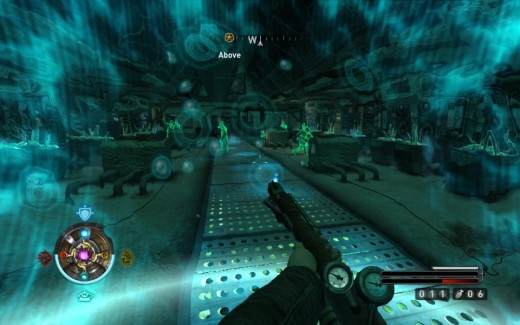
12. Wolfenstein (2009)
This was the fourth game in id Software’s Wolfenstein series, and was released after much hype in 2009. And it was either labelled as boring, unoriginal, or just bad by most out there. This is the second game in the series, like RTCW before it, that wasn’t developed by id. Instead Raven took the reigns this time, and Raven is known to be an average-game studio, with a few exceptions. Look at Heretic, Hexen, and more recently Quake 4, for instance. And then look at such stellar games like Jedi Knight II: Jedi Outcast.
But RTCW, which was handled largely by Grey Matter, turned out to be a great game for its time, even if I maintain it hasn’t aged all that well since its release – it’s still fun to play, and I’ve played it several times over the years.
Despite the reviews, I tried this Wolfenstein to see what it was like. I found it wasn't that bad. It was still a solid game, but like some claimed, wasn’t a great title, and probably not better than RTCW, its predecessor. The theme of the occult which we associate with the series was still there, but with new gimmicks and such that we’ve not seen before – apart from having seen them in other games. Another Raven title, Singularity, was very similar for instance.
My favourite new addition was being able to upgrade weapons and items. This game featured the MP 1943 (or STG 44) – the bigger brother to the MP 40 submachine gun. And this was the game’s AK47. In fact in reality, this German-made gun is claimed to be the first ever assault rifle – even older than the Russian one we all know and love. There was almost no end to the modifications one could make to it, and it instantly became my weapon of choice.
There was some continuity here with Deathshead from RTCW making a return, and even Hans Grosse, who I thought I’d eliminated in Wolf 3D’s shareware episode, came back seemingly from the dead. This especially, if a little anachronistic, was interesting to say the least, and made me smile.
It may not be the best WW II shooter, and not the best in the series even if it is prettier, but you know, like I said – it’s not that bad.
Which is your favourite out of this Dirty Dozen presented here?
© 2012 ANDR01D



